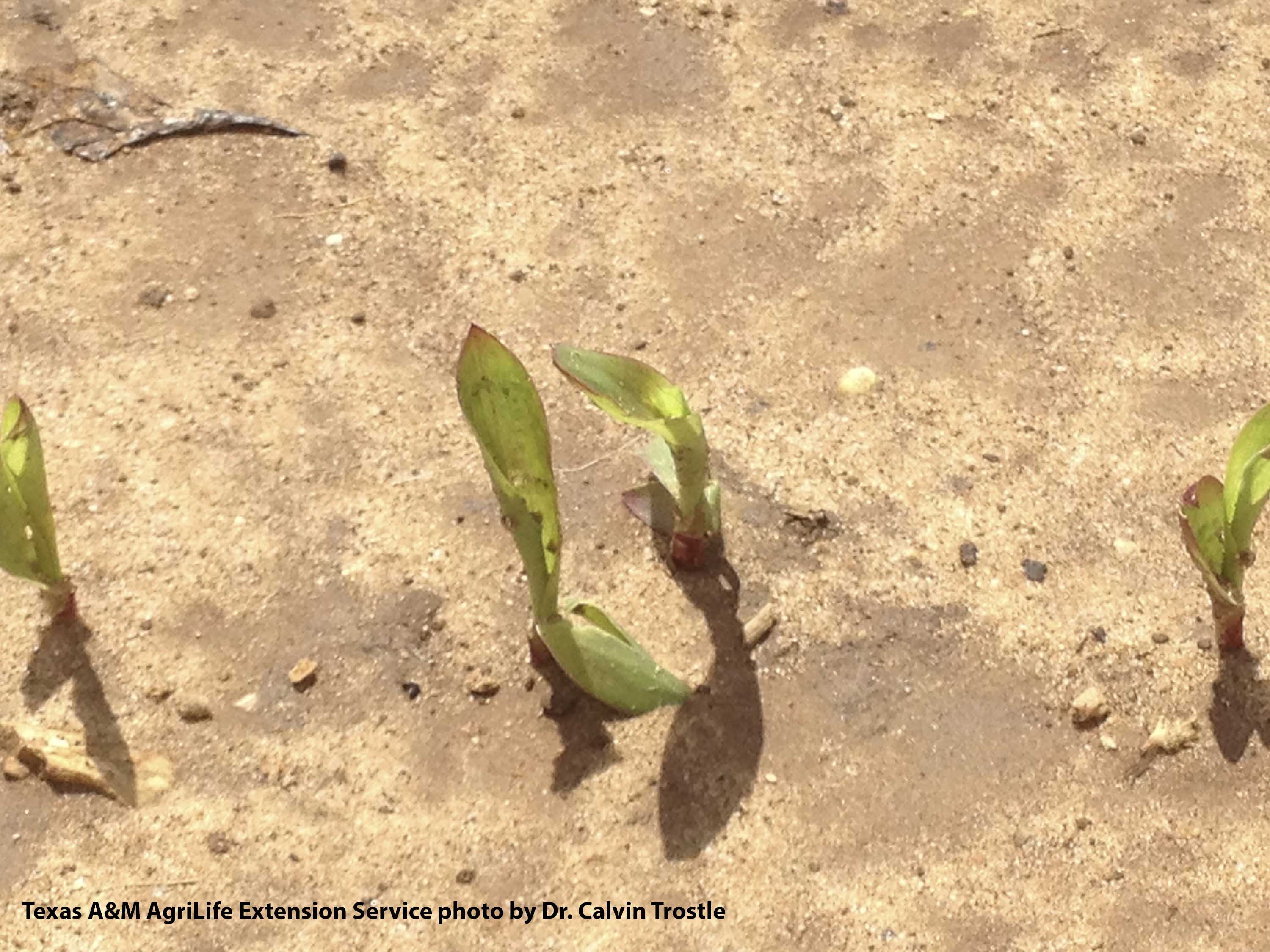By Steve Byrns
Texas A&M AgriLife Extension, San Angelo
The latest Texas A&M AgriLife Extension Service crop hail-damage assessment and replant guide is now available, said its author.
Dr. Calvin Trostle, Texas A&M AgriLife Extension Service agronomist at Lubbock, said Texas farmers in the Lubbock and South Plains region regularly face the risk of hailed-out crops this time of year. When it occurs, especially on cotton, he advises growers may need to wait up to a week before determining the fate of their hail-hammered crop.
Should they stay with the crop, fallow the rest of the season or replant? To help them navigate through the options, Trostle recently published his 15th annual 2017 Alternative Crop Options after Failed Cotton and Late Season Crop Planting for the Texas South Plains.
The document, posted at http://lubbock.tamu.edu, is updated annually in June. It encompasses everything from assessing damaged cotton stands, to herbicide precautions and basic agronomics, including the last recommended planting dates for various crops such as grain sorghum, sunflower, guar and black-eyed peas with hybrid or variety maturity data added where applicable.
Dr. Seth Byrd, AgriLife Extension cotton agronomist at Lubbock, said Trostle’s work is invaluable, because assessing a damaged cotton stand can be tough.
“Farmers need to be patient, because it sometimes takes a week before you know what the survival rate of cotton plants on a hailed-out field will be,” Byrd said. “This is important this late in the season as a damaged stand with as little as 1.5 plants per foot of row may still be a keeper, especially if the plants are uniformly spaced.”
Danny Nusser, AgriLife Extension regional program leader at Amarillo, said the publication offers good timely information for AgriLife Extension agents and farmers alike.
“Producers may be surprised that they even have options and that viable crop replanting and late planting options are available as late as mid-July,” he said. “And this is especially true moving south from Lubbock.”
When Trostle began the guide in the early 2000s, he never thought it would become the comprehensive document it is today.
“The guide reflects a lot of what I have learned about farming in the Southern High Plains region,” he said. “And truthfully, preparing it every year may help me as much as anyone to deliver sound science-based advice to growers.”
For more information, contact Trostle at 806-746-6101 or ctrostle@ag.tamu.edu.

